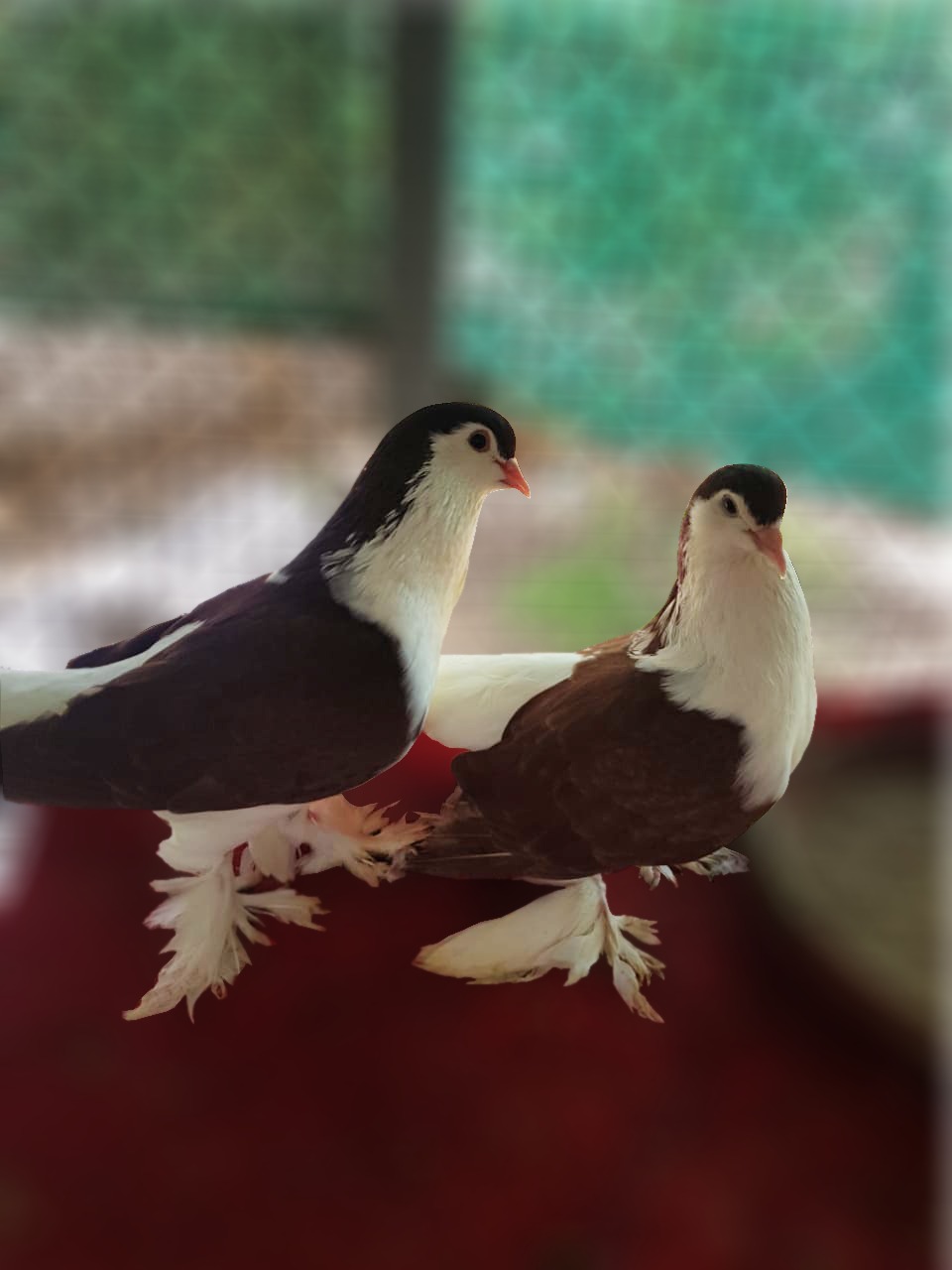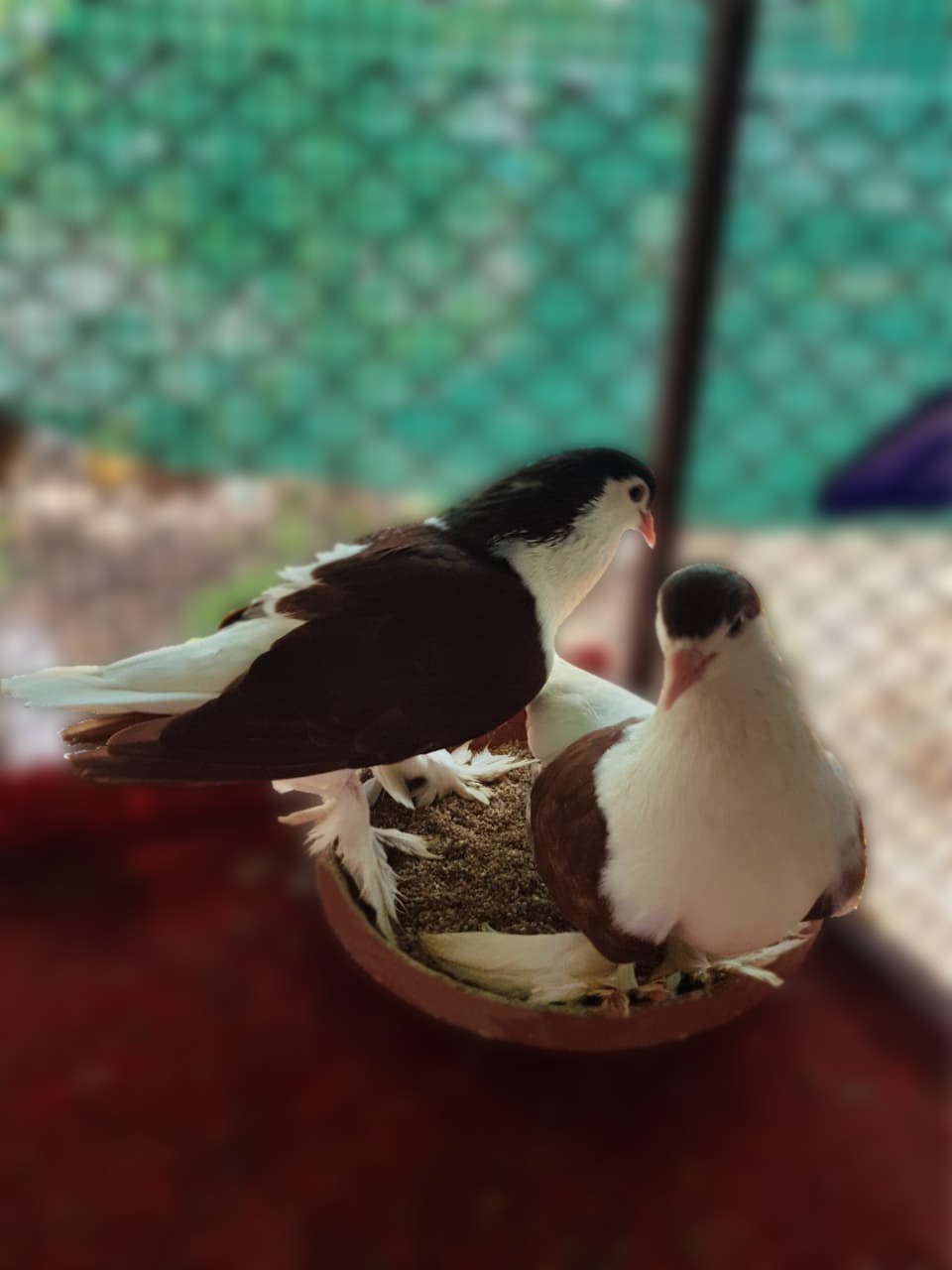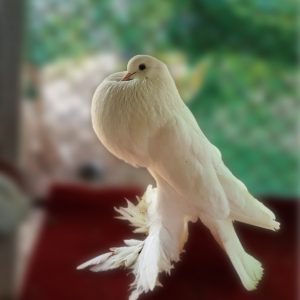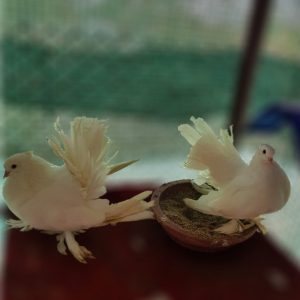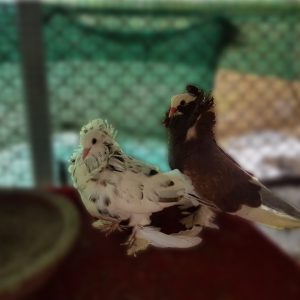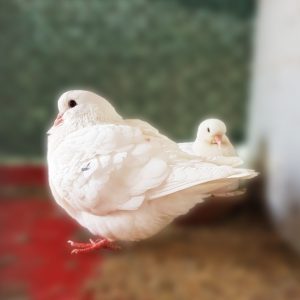Description
Origin For a very long time this bird was bred in the present area Iran (Persia). It was imported into Germany around 1880 and became popular among pigeon enthusiasts at the beginning of the 1960s. They are usually found in the area of Iran (Shiraz) and are some of the most colorful pigeons. These ornamental pigeons from ancient Iran were once bred for their meat, but today they are raised for their beautiful plumage and colorful patterns. Their calm and gentle natures also make them delightfully tame pets.
Appearance
The Shirazi is large for a pigeon, approximately 10.5 inches tall and 11.5 long. From shoulder to shoulder, it measures 5.5 inches. Its markings are also unusual: the base color is white, with a secondary color beginning at the juncture of beak and wattle and spreading in an arc over the eyes and across the back and wings. The rump and tail are to be white, though in pigeon shows the majority of attention is paid to the quality of the head, neck, and wing markings.
The neck should be heavily feathered and should lead to a full, broad chest. Cheeks should be plump, and the beak should be “broad and stout and rather blunt at the tip.” Feet and legs are feathered so that the bird appears to be wearing thick stockings.
Lahore are bred in many different colors, including blue-bar, checkered, red, blue, brown, and black.
Behaviour
The Lahore is generally a very gentle and shy pigeon, they are good natured and can be tamed quickly (if not tame by nature). Although if they are not handled by humans at a young age, they may act feral and hard to tame in some cases.


